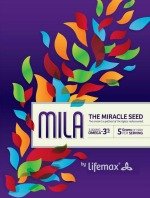ARMD: Know the Symptoms
Age Related Macular Degeneration: What is it? ARMD is a degenerative condition of the central portion of the eye. There are two forms of this Eye Disease: Dry and Wet. Dry ARMD is a slowly progressive condition. The vast majority of Macular Degeneration patients have the dry type.
The dry form of the disease is less severe. It is referred as dry because it is not characterized by bleeding or leaking blood vessels.
In this case, Early Symptoms may include:
- Gradual, painless distortion or loss of central vision
- Distortion of straight lines
- Blurred vision
- Color distortion
- Reduced Contrast Sensitivity and problems with glare
Experimental Treatments primarily focus on the destruction of Choroidal Neovascular Membranes (CNVMs), which is a sign of Wet Age-Related Macular Degeneration. The ideal treatment of the future will be able to arrest the disease at a stage before CNVMs develop; i.e., when it is Dry Age Related Macular Degeneration. Because of its greater threat to your vision, most FDA Approved Macular Degeneration Treatments have been created to stop the progression of Wet Age Related Macular Degeneration.
Finding the Cause of Macular Degeneration is very difficult since Age Related Macular Degeneration is a multifactorial disease. It is doubtful that only one factor can put you at risk for vision loss from this Eye Disease, but that its cause is a genetic/external variable interplay.
Because Age Related Macular Degeneration is a multifactorial condition, A Macular Degeneration Cure will need to attack this Eye Disease on many fronts. Unfortunately, a cure still evades us.
An important piece in managing Age Related Macular Degeneration is implementing Macular Degeneration Prevention measures in order to reduce your risk of vision loss.
Since Age Related Macular Degeneration progression has been associated with a number of modifiable external risk factors, there are several tips to follow to minimize your risk of vision loss:
- Smoking cessation
- Maintaining a healthy weight with good nutrition (green leafy vegetables, fish, walnuts) and exercise
- Always wearing UV protection sunglasses while outdoors
- Getting routine eye exams annually, especially after age 55
Once vision loss occurs, the goal is to stop the progression and perhaps even recover some vision. Drugs that can stop the growth of new blood vessels, which tend to leak and bleed, have given Age Related Macular Degeneration patients hope in achieving this goal. Lucentis is a drug which has been shown to stop the growth of CNVMs. It is administered in intravitreal injections every 4 weeks and remains the gold standard for the treatment of Wet Age Related Macular Degeneration.
Avastin® is a similar drug that differs in size from Lucentis® and is being used off-label for Age Related Macular Degeneration. The biggest advantage of Avastin® compared to Lucentis® is cost.
The Avastin® vs. Lucentis® debate may be settled in 2012, with the results of the Comparison of Age-Related Macular Degeneration Treatment Trials (CATT), the first large-scale, head-to head comparison between the two drugs.
While these drugs are being used to treat Wet Age Related Macular Degeneration, Dry Age Related Macular Degeneration is also being substantially studied because it is the most common form and if it can be effectively treated, this may significantly reduce the risk of conversion to Wet Age Related Macular Degeneration.
Among the management strategy is the home monitoring for central vision loss with the use of an Amsler Grid. Amsler Grid has been the traditional method used to help patients self-monitor any central vision loss at home although better diagnostics are being utilized in eye clinics.
Studies are not only focusing on better diagnostics, but on treating Dry ARMD and thus reducing vision loss from conversion to Wet ARMD. These studies are being accomplished through multiple Macular Degeneration Clinical Trials and research.
In turn, this work is paving the way for New Treatment for Macular Degeneration. These new options are attacking ARMD on many fronts to arrest this visually devastating Eye Disease.
Return From ARMD to Macular Degeneration





